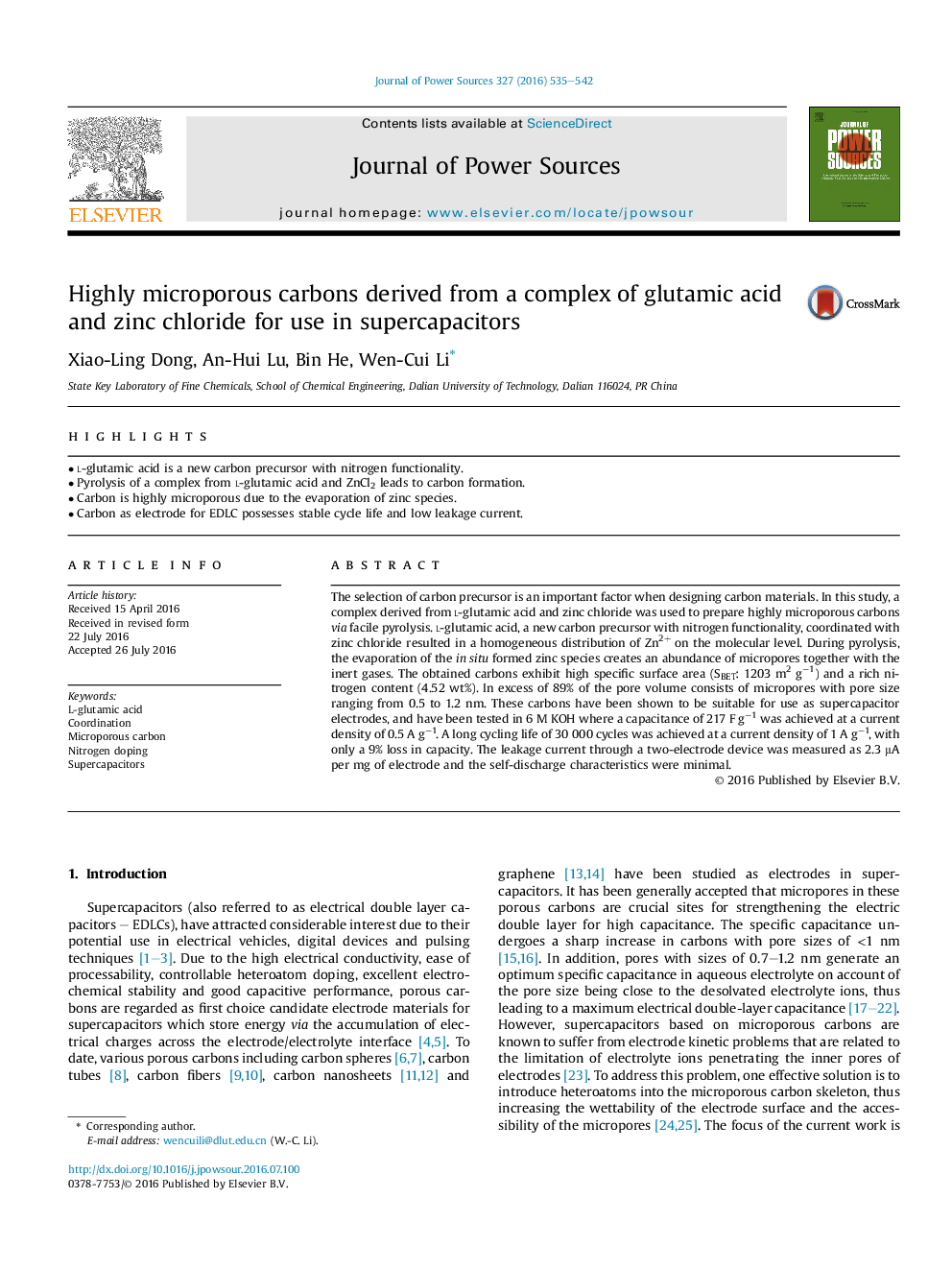| Article ID | Journal | Published Year | Pages | File Type |
|---|---|---|---|---|
| 7727432 | Journal of Power Sources | 2016 | 8 Pages |
Abstract
The selection of carbon precursor is an important factor when designing carbon materials. In this study, a complex derived from l-glutamic acid and zinc chloride was used to prepare highly microporous carbons via facile pyrolysis. l-glutamic acid, a new carbon precursor with nitrogen functionality, coordinated with zinc chloride resulted in a homogeneous distribution of Zn2+ on the molecular level. During pyrolysis, the evaporation of the in situ formed zinc species creates an abundance of micropores together with the inert gases. The obtained carbons exhibit high specific surface area (SBET: 1203 m2 gâ1) and a rich nitrogen content (4.52 wt%). In excess of 89% of the pore volume consists of micropores with pore size ranging from 0.5 to 1.2 nm. These carbons have been shown to be suitable for use as supercapacitor electrodes, and have been tested in 6 M KOH where a capacitance of 217 F gâ1 was achieved at a current density of 0.5 A gâ1. A long cycling life of 30 000 cycles was achieved at a current density of 1 A gâ1, with only a 9% loss in capacity. The leakage current through a two-electrode device was measured as 2.3 μA per mg of electrode and the self-discharge characteristics were minimal.
Related Topics
Physical Sciences and Engineering
Chemistry
Electrochemistry
Authors
Xiao-Ling Dong, An-Hui Lu, Bin He, Wen-Cui Li,
